Pop quiz: how does your social presence stack up against your closest competitors?
Seems like a pretty straightforward question.
However, measuring success on social media is tricky.
Because comparing “Likes,” shares and other performance metrics between businesses doesn’t mean much in a vacuum.
Should you be happy about those 100 retweets? Is a 2.4% engagement rate on Instagram cause for concern or celebration?
You need context. That’s where competitive benchmarking comes in.
Through benchmarking, you can better understand where your company is winning and uncover opportunities to improve your content strategy. This guide will break down exactly how.
What is competitive benchmarking?
Simply put, benchmarking means comparing the performance of something against a standard.
In marketing, competitive benchmarking is the process of measuring your company’s campaigns versus your competitors’. By tracking specific metrics and KPIs, you can establish realistic benchmarks to assess your performance.
Benchmarking is common practice in business. For example, a company might practice internal benchmarking within a department so a set number of tasks are completed per week (think: sales calls). This standard encourages accountability and likewise gives employees a goal to work toward.
The same rings true when it comes to benchmarking on social media. Rather than second-guess whether a campaign or piece of content performed well, you can look at your benchmark and get a data-driven answer as to how it stacks up to similar efforts by competitors.
Why competitive benchmarking is so important
Doing competitive research can be tough to fit into marketers’ already busy schedules, but there are some key reasons why benchmarking is worthwhile, particularly in a crowded, increasingly busy social marketing space.
Competitive benchmarking encourages you to set more actionable goals
Competitive benchmarking can tell you exactly what your social media goals should be, performance-wise. For example, you don’t have to spitball your target engagement rate or how much you should post per week if you have your benchmarks set. This means you can spend more time on actionable tasks to get you there.
Benchmarking allows you to highlight your wins to stakeholders
As noted by Sprout’s own research, there’s increasing pressure on marketers to prove the ROI of their efforts to managers and higher-ups. For folks who aren’t sure what “success” on social media looks like, benchmarks allow you to explain your performance in a context that can be understood across your organization.
Benchmarking helps you to keep a better pulse on your competitors
If nothing else, benchmarking encourages you to keep better tabs on your competitors’ content strategy. This makes it easier to spot industry trends and brainstorm future campaigns to set yourself apart.
Which competitors should I analyze for benchmarking?
Good question! An independent cafe or retailer shouldn’t create benchmarks versus Starbucks or Target, for example.
You ideally want to look at competitors whose social presence and target audience closely resemble your own. Chances are you already have an idea of who your closest competitors are. Even so, conducting a thorough competitive analysis can help you hone in on who you should focus on.
Which metrics and KPIs matter most for benchmarking?
The key difference between competitive benchmarking versus general competitive analysis is, well, data.
Benchmarking requires you to quantify your competitor’s performance with numbers. Contrast this with, say, analyzing their marketing messaging which is more abstract.
Which social media metrics are most important for benchmarking? In short, the ones you can track.
Sure, you can measure click-throughs, engagement rate and ad buys from your own posts. You can’t glean the same information from your competitors, though. Instead, you have to focus on metrics that you can spot in the wild such as:
- Interactions
- Post volume
- Keywords and hashtags
This is where a competitive analysis tool like Sprout Social comes in handy. For example, our platform can compile performance metrics from competitors and highlight how they compare:
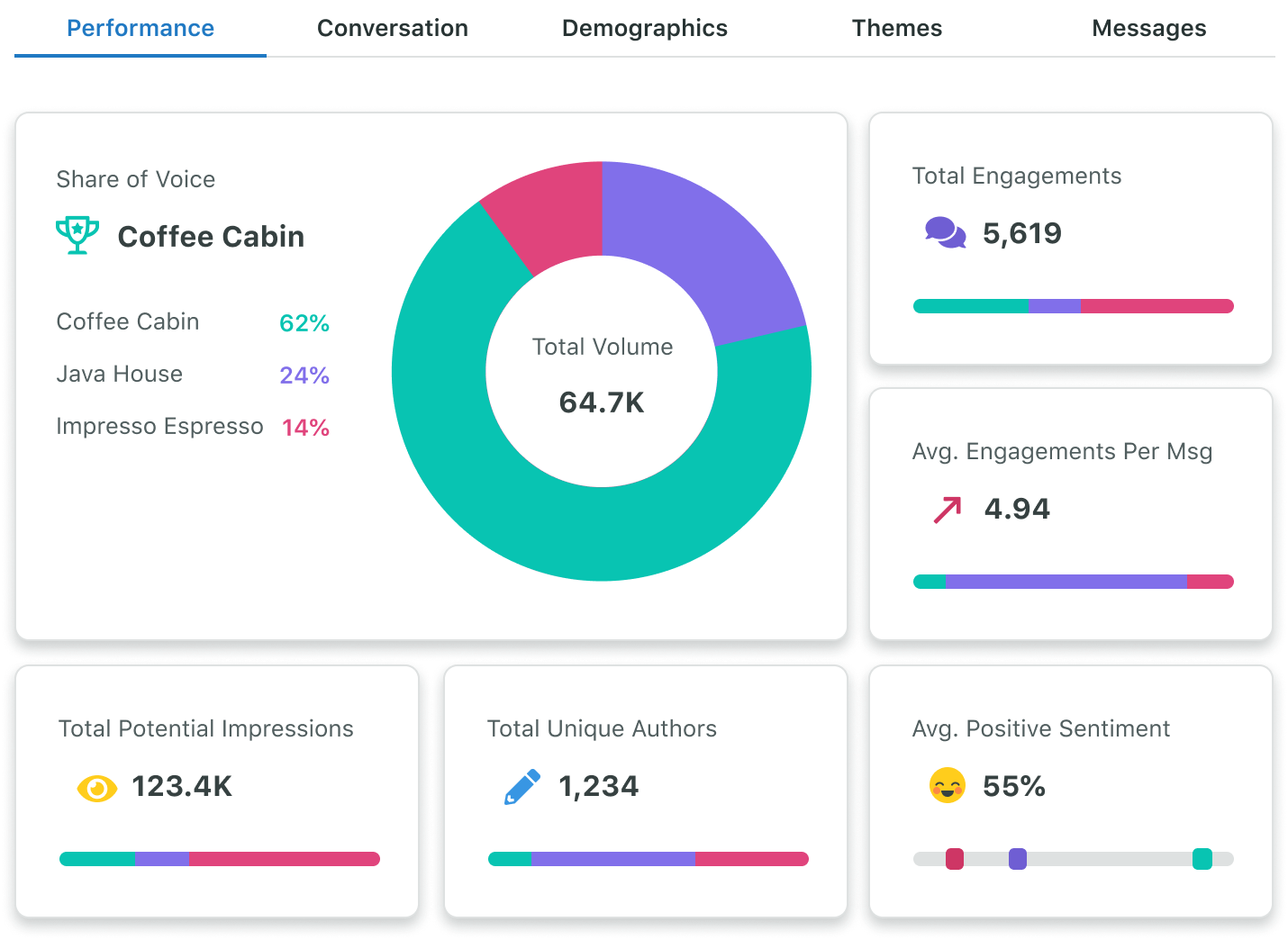
Beyond social media competitive benchmarks, you can use additional competitor analysis tools to get an even more holistic view of competing campaigns. This might include:
- Email marketing frequency and campaign types
- Search traffic, volume of website visitors and target keywords
- Content publishing frequency, blog post topics and length
8 competitive benchmarking tactics for social media
Again, there’s plenty of benchmarking data you can gather without digging. This is especially true on social media where performance data is so transparent.
Below is a breakdown of what to look at to determine your competitive benchmarks.
1. Content performance
First things first: marketers need to know what’s considered top-performing content in their space.
When you create consistent posts that explode in “Likes” and shares, it’s a clear signal that you’re giving your audience what they want.
And similarly, you should know what your competitors are posting that’s scoring them the same sort of love.
The good news? These numbers don’t have to be a secret thanks to competitive analysis tools. For example, with BuzzSumo you can see the most popular content in your industry broken down by keyword. You can also see how well it’s performed across social media.
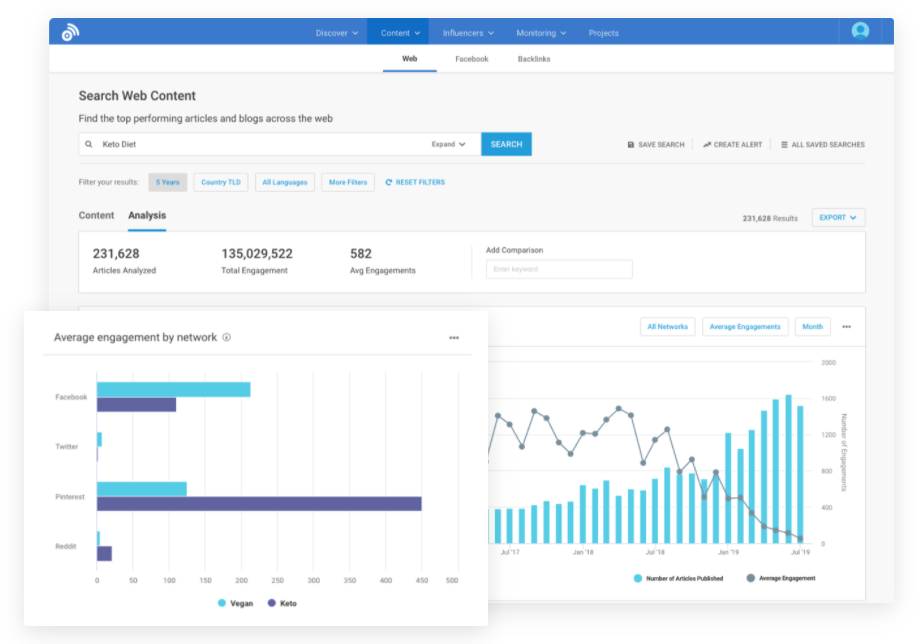
But more importantly, you need to start by zeroing in on which pieces of content are working for you.
For example, analytics such as engagement reports in Sprout provides an in-depth breakdown on which of your pieces score the most traction. By analyzing impressions, engagements and clicks, brands have actionable insights on what they should be posting on a day-to-day basis.
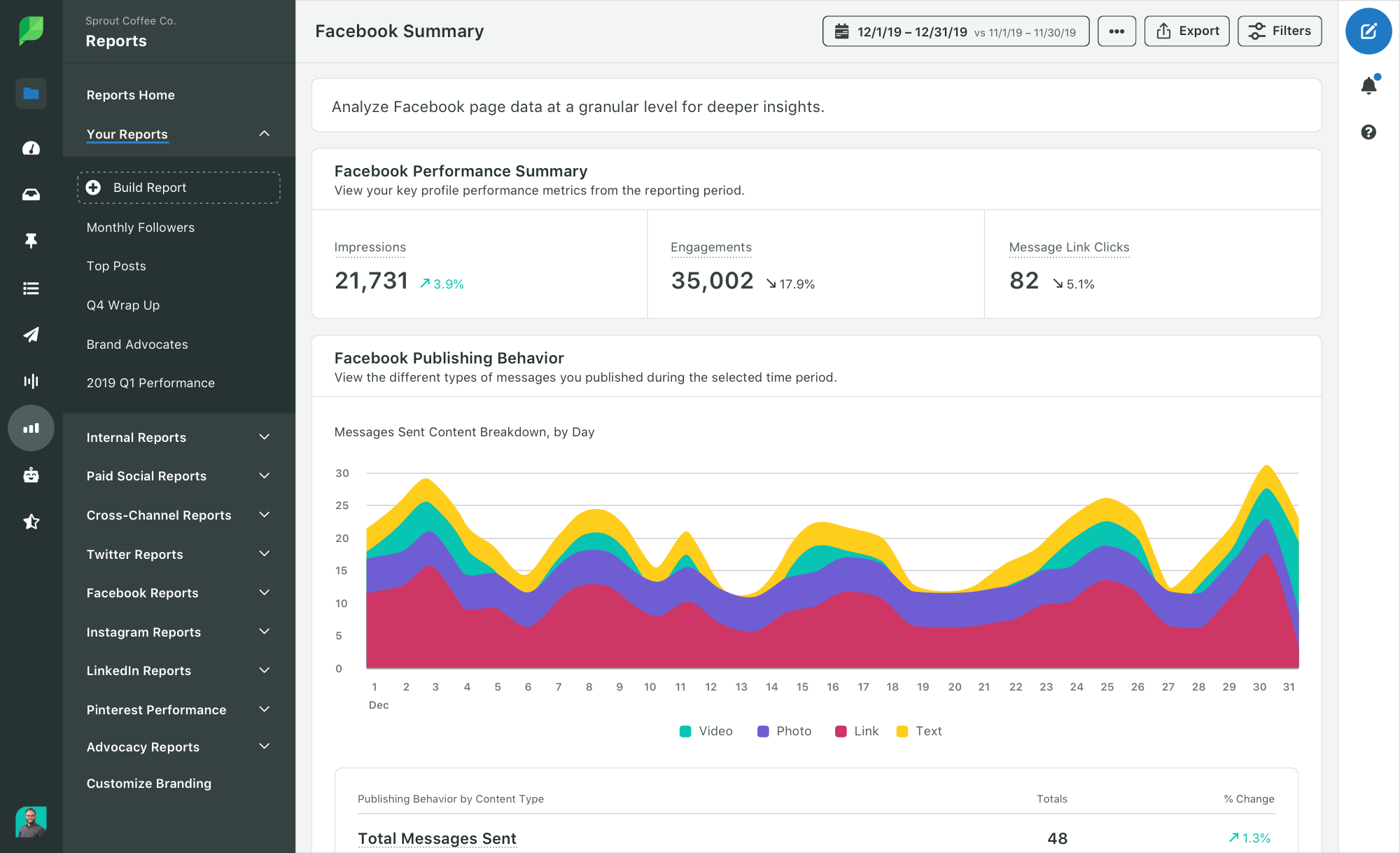
By weeding out underperforming posts and content, you can consistently fine-tune your posts’ performance over time. Identifying those posts that are consistently reliable, middle-of-the-pack performers can serve as your benchmark for your brand’s social content.
2. Timing and frequency
Timing is a critical competitive benchmark as brands try to maximize the number of eyeballs they get on any given post.
Based on Sprout’s own data, the best times to post on social media vary from platform to platform.
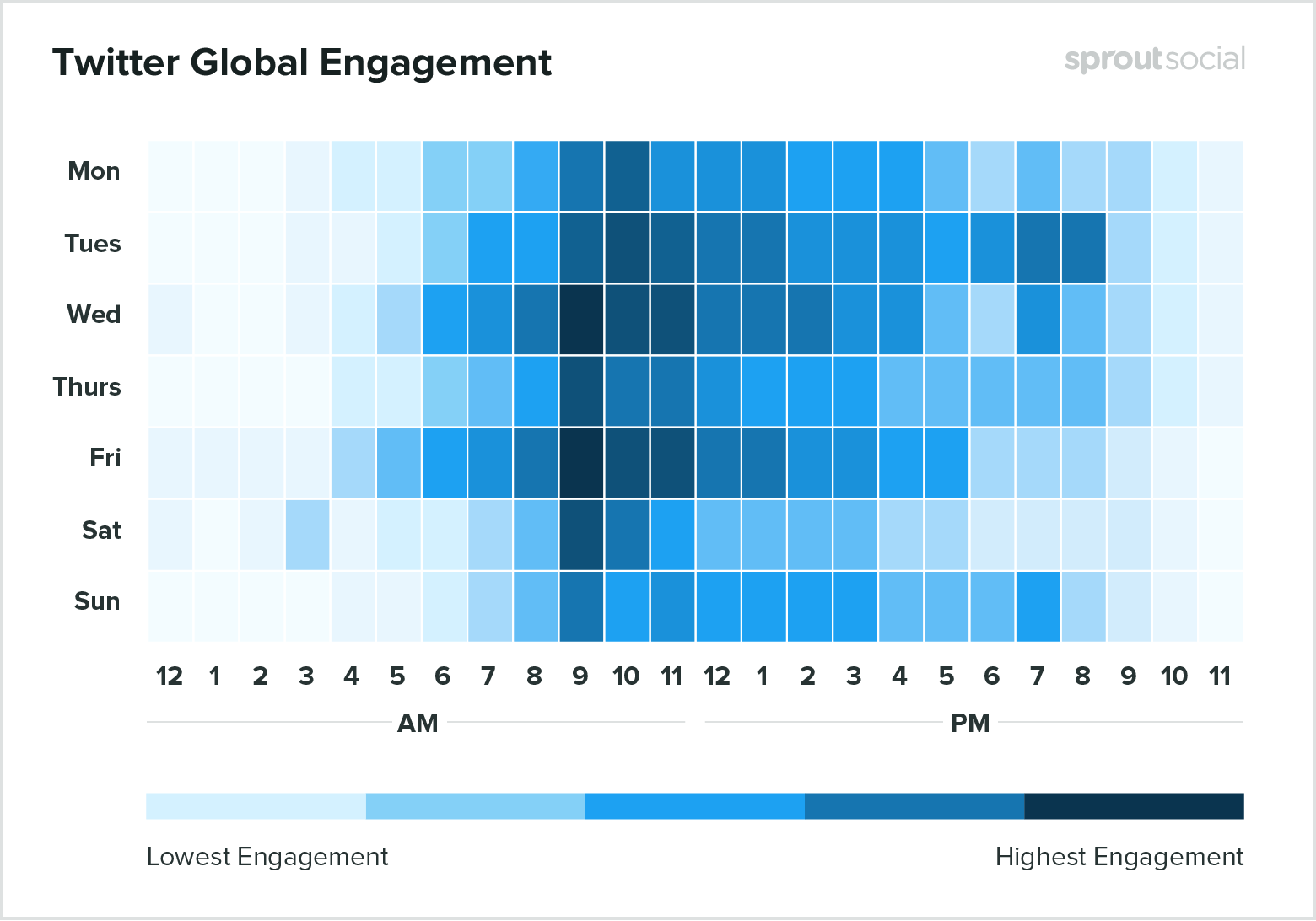
Either way, if you aren’t publishing your posts when your audience is most active, you’re inevitably stifling the reach of your content. You’re also risking an opportunity for competitors to swoop in for your followers’ precious attention.
Here’s some food for thought, though: brands should not only be aware of when they’re posting but also how often.
For example, if your competitors are consistently posing on Facebook, Instagram and Twitter multiple times today and you’re not, there’s likely going to be a gulf of difference in terms of your social followings.
As such, take some time to conduct a competitive audit that examines when, where and how often your competitors are posting. Doing so can clue you in on “dead” periods of time where nobody in your industry is posting, or networks they aren’t using effectively. This can open your eyes to opportunities your competitors are neglecting.
3. Engagement rate
It can’t be said enough: your follower count isn’t the be-all, end-all of your social presence.
As a competitive benchmark, your brand’s engagement rate is much more important.
In short, engagement rate pits your follower count against how many likes, shares or comments a post scores.
Here’s a breakdown of average Instagram engagement from Phlanx. Note how smaller accounts typically have higher engagement rates versus bigger ones. This is something to consider if you’re an up-and-coming company creating benchmarks versus big-box competitors.
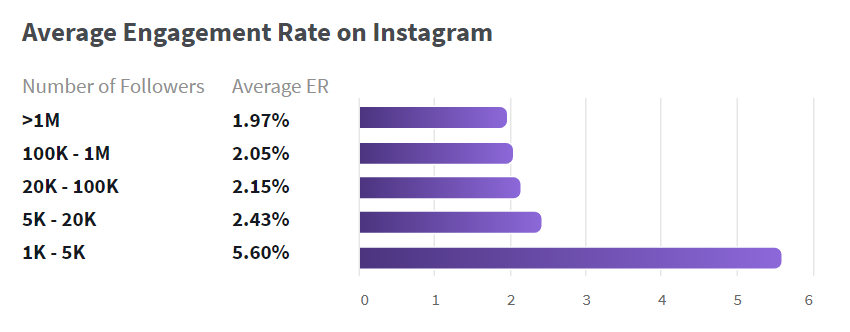
A brand with 1,000 engaged, active followers is much more valuable than a brand with 10,000 followers that sit on their hands. Whether it’s due to fake followers or lackluster content, there are brands that have seemingly massive “followings” on paper but low engagement rates.
Just like any metric mentioned here, it’s also important to understand what constitutes a strong engagement rate in your specific area of business. This isn’t universal by any means and can vary significantly by industry or niche.
Ultimately, higher engagement means higher participation in your campaigns. This enthusiasm is much more likely to result in sales, brand advocates and a legitimate ROI for your efforts.
4. Types of content
In pursuit of more engagement, brands should look at the types of content they publish as a key competitive benchmark.
Think about it. There’s so much diversity in terms of which formats perform best on which platforms.
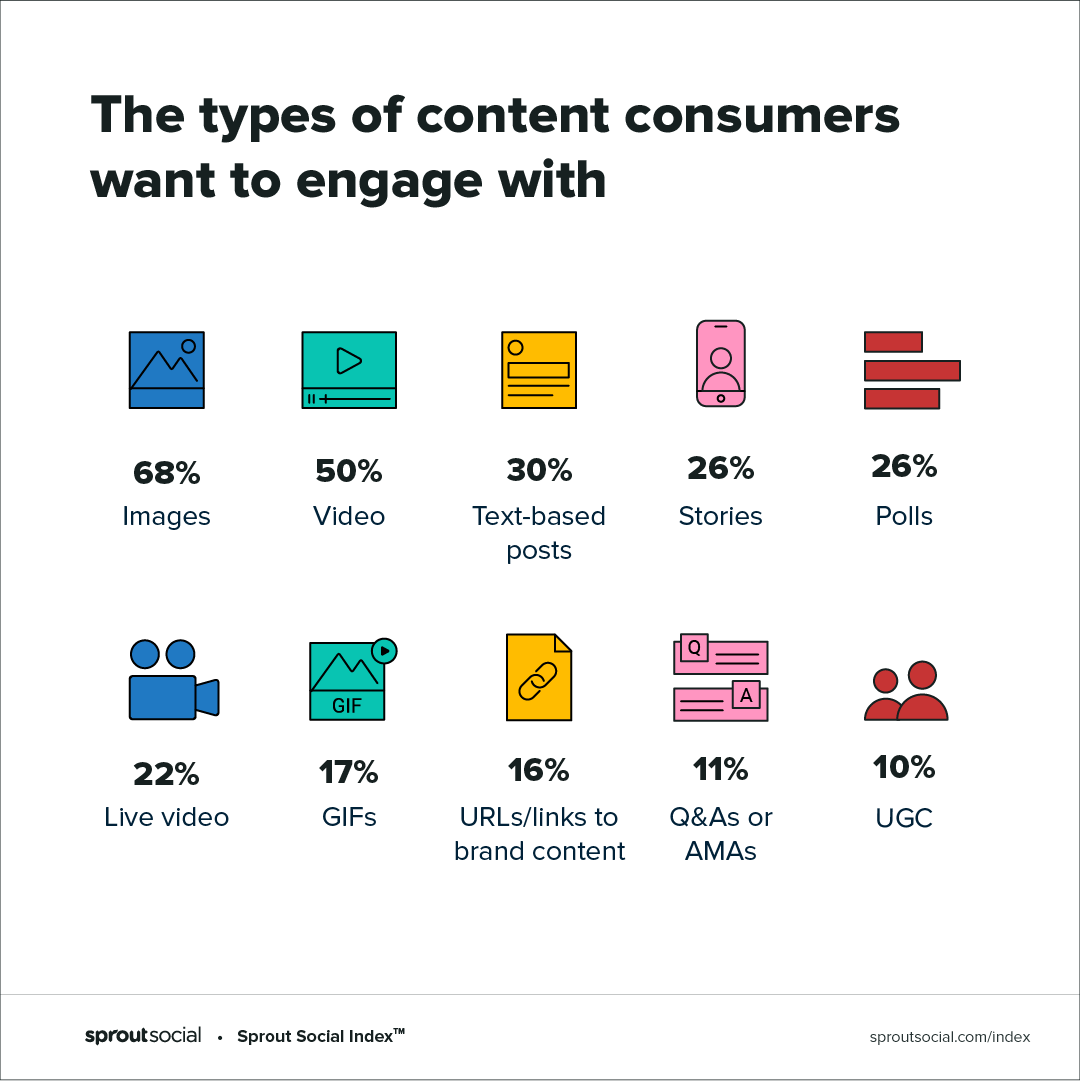
For example, brands like RXBAR publish a combination of videos, carousels, influencer posts on their Instagram and tons of Stories, which you can see highlighted on their IG page.
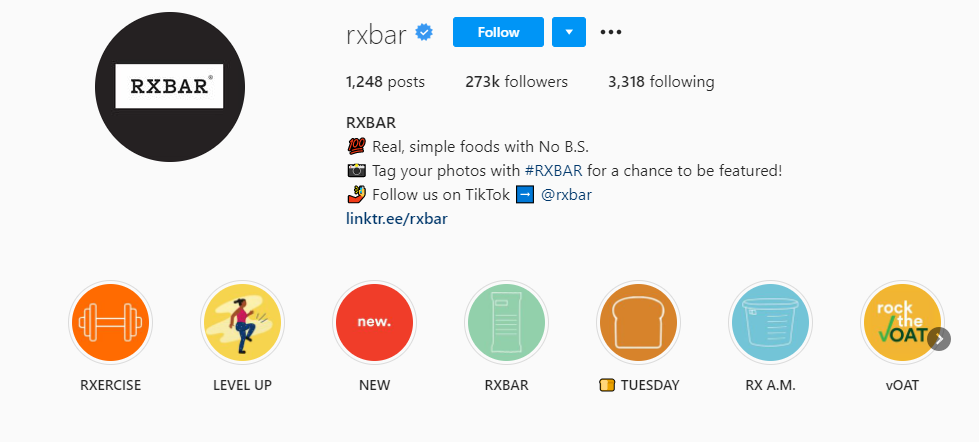
The takeaway here is that competitive brands don’t just post the same type of content again and again and expect results. Similarly, you should have an idea of how your content strategy serves as a contrast to others in your space.
As part of auditing your competition, try and see which types of content or promotional tactics they’re sleeping on.
Maybe it’s video. Perhaps they don’t do much in terms of user-generated content and hashtags.
Regardless, there are so many social media ideas to ensure your content strategy doesn’t look identical to your competitors’.
5. Growth rate
Conventional wisdom tells us that if you consistently post and engage with your social followers, your presence will grow.
Publishing fresh content. Rolling out new campaigns. Going back-and-forth with fans. The list goes on and on.
And while these are all great actions to take, brands should be aware of just how much their social following grows as a result. As a competitive benchmark, growth rate examines how much your following has grown versus raw numbers which don’t mean much by themselves.
For example, while 1,000 followers in 6 months might seem like a flood to you, that might be a drop in the bucket to a major brand.
Reports such as Sprout’s audience growth analysis track your growth rate over time alongside your competition. This can help you see if certain campaigns were more effective than others, and likewise if your competitors put together a top-tier campaign themselves.
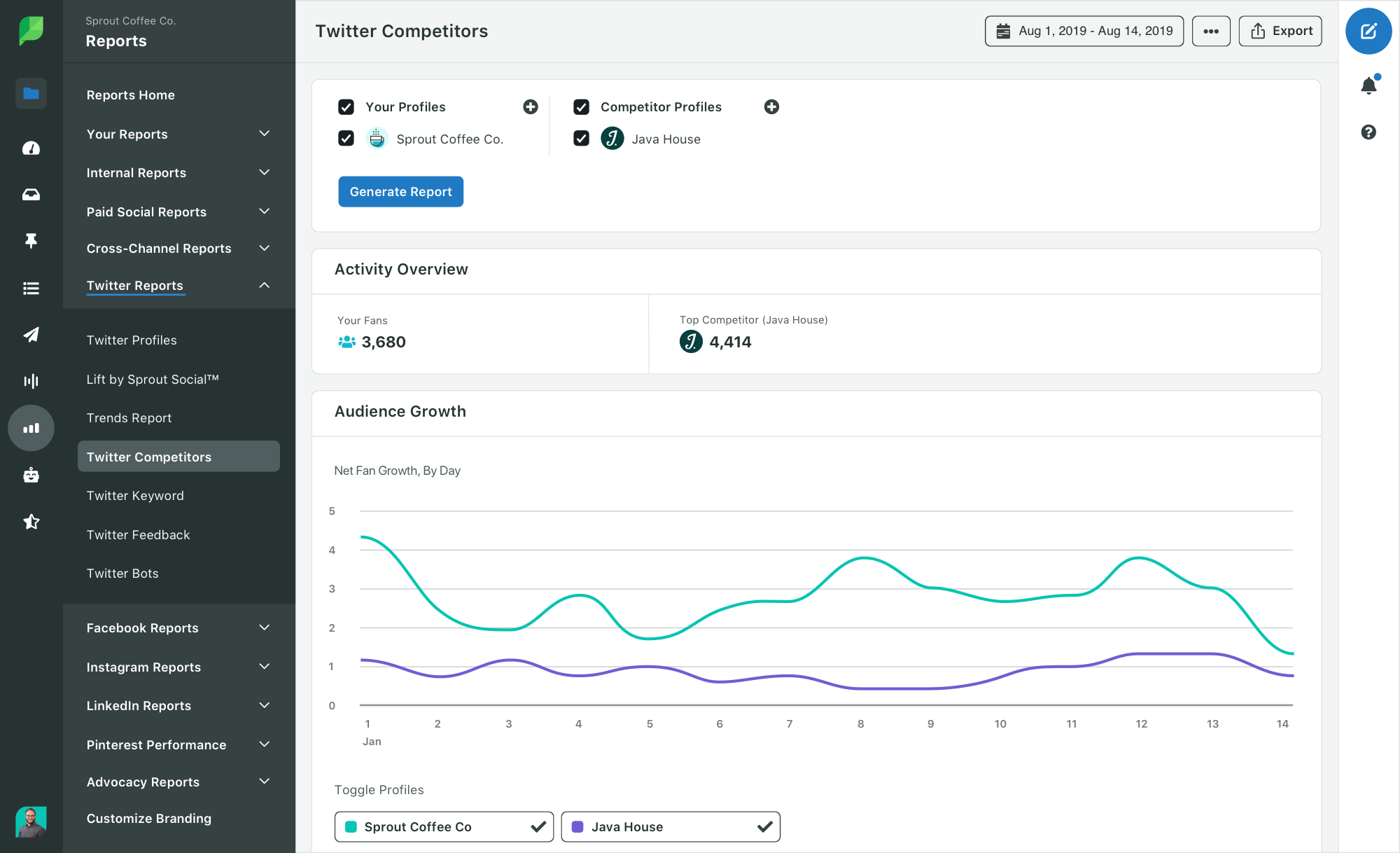
6. Share of voice
Do you consider your brand to be a leader in your industry? An up-and-comer? Somewhere in-between?
No matter what space you’re in, you’re likely gunning for a position among your competition.
Share of voice is a competitive benchmark that measures just how much you’re being heard against similar brands via social.
For example, are you up on all of your industry hashtags? Are you sitting on the sidelines when it comes to controversy in your space or are you taking a stand?
Boosting your share of voice ultimately involves contributing more to your industry’s conversation. This means posting thoughtful content, engaging with your audience and taking a stance on issues within your industry.
7. Sentiment analysis
Yet on a related note, there’s more to social media than just being the loudest voice in the room.
We live in a day and age where not all press is good press. Sentiment analysis is a competitive benchmark that measures whether or not your brand mentions are positive, negative or neutral in the eyes of your audience.
This metric is particularly important if you’re laser-focused on customer care and interacting with your followers. Sentiment analysis should most definitely be part of your social listening strategy to ensure that you capitalize on positive mentions and address negative ones.
8. Social mentions
Scoring social mentions is an essential goal for any brand. Being able to participate in conversations provides moments to sell your brand in a personalized way to audiences that have already made an effort to engage with you.
As a result, you need to know who’s talking about you and likewise who might be talking about your competitors. Again, this is why social listening is so important for tracking competitive benchmarks.
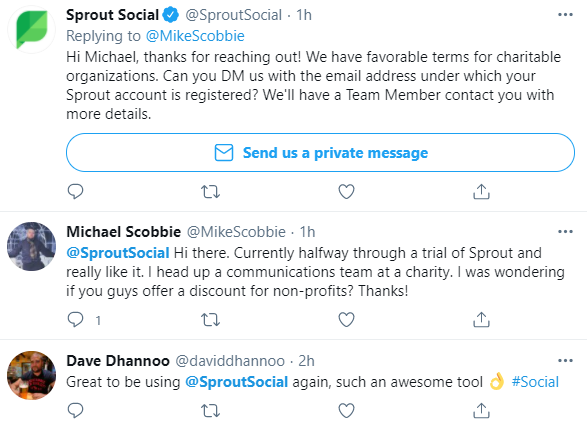
Because after all, not all mentions should be treated the same. Scoring a shout-out from a major industry player or influencer serves as social proof for your brand. The ability to track, measure and respond to mentions in real-time also signals you as a more active participant in your industry.
What does your competitive benchmarking strategy look like?
Competitive benchmarking is a crucial piece of any social strategy.
The better you understand your benchmarks, the easier it is to come up with high-performing content and grow your presence.
If the process of benchmarking sounds daunting or you don’t know where to start, don’t panic.
We’ve actually put together a ton of different social media templates to help you organize and prioritize the pieces of your strategy (such as competitive analysis). If you haven’t already, snag ’em today!
This post How to use competitive benchmarking to grow your social presence originally appeared on Sprout Social.


